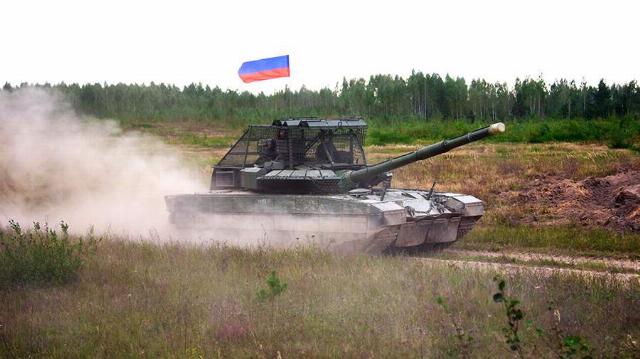Zapad-2025 exercises with the participation of 100,000 military personnel have ended
The Zapad-2025 military exercises in Russia and Belarus ended on the evening of September 17. The maneuvers involving about 100,000 military personnel were devoted to repelling possible aggression, including the use of the Oreshnik missile system, the use of long-range bombers, and the launch of the Dagger missile at a naval target. The exercises provoked a sharp reaction from the NATO countries, despite the fact that their representatives themselves observed the course of action. How was the "West-2025" — in the material of "Izvestia".
Who took part in the exercises
• The joint strategic exercises of the armed forces of Russia and Belarus began on September 12. Their goal was to work out the management of joint groups of troops in solving various tasks. At the first stage of the exercises, the aggression against the Union State was played out, the organization of interaction and support was checked. The second stage of the exercise was devoted to the command and control of troops while restoring territorial integrity and defeating the enemy.
• Zapad-2025 exercises were held in several locations in the two countries. In addition to Belarus, the military conducted maneuvers at Russian training grounds in the Leningrad, Kaliningrad, Murmansk and Nizhny Novgorod regions, as well as in the waters of the Baltic and Barents Seas. In total, 41 training grounds were involved, about 100 thousand military personnel participated, 10 thousand units of weapons systems and equipment were used.
• A special feature of the Zapad-2025 exercises was the participation of several foreign delegations at once. Bangladesh, India, Iran, Burkina Faso, Congo and Mali sent their own task forces and military contingents that directly participated in the maneuvers. More than two dozen other countries acted as observers, including three NATO countries — the United States, Turkey and Hungary, which sent their representatives to Belarus. This confirmed the defensive orientation of the exercises, which was stated by the Russian and Belarusian command.
• The main location of the action was the Nizhny Novgorod Mulino training ground. This part of the exercise was attended by Russian President Vladimir Putin, who donned a military uniform for the occasion. Together with the defense Ministers of the Russian Federation and Belarus, Andrei Belousov and Viktor Khrenin, he observed the maneuvers, as well as inspected the latest models of military equipment and weapons. The President inspected the Bulldog and Kayo-T4 motorcycles, the Sarmat special vehicle and the Ulan-U2 car, as well as the battalion commander's command and staff car.
How did the exercises go?
• Among the activities carried out within the framework of the exercises was the planning and consideration of the use of non-strategic nuclear weapons, as well as the evaluation and deployment of the Oreshnik mobile missile system. Maneuvers with him took place on the territory of Belarus, where he will appear for permanent deployment by December 2025. The deployment of the Iskander missile system also took place in the Kaliningrad region.
• Special attention was paid to the joint use of drones. The Russian and Belarusian militaries have worked out both the use of drones and how to counter them. The UAV was launched from specially equipped dugouts, and 82 mm mortar mines were used as a combat load for FPV drones. The operators of the attack drones carried out tasks to cover the attacking units and destroy the manpower of the imaginary enemy.
• As part of the aerial part of the exercise, MiG-31K crews with the Dagger hypersonic system flew over the Barents Sea. They have worked out the elements of search, guidance and simulated strikes. Tactical aircraft consisting of Su-30SM, Su-34, and Su-35S attack aircraft provided cover and fire support for units on the ground, while conducting practical bombing. Long-range Tu-22M3 bombers were also involved — they patrolled the sea and coastline, also performing strike missions.
• The Arkhangelsk submarine missile cruiser is also on duty in the Barents Sea. He successfully launched Kalibr missiles at a naval target. The ships of the Northern Fleet actively interacted with aviation and neutralized the underwater saboteurs. In the Baltic Sea, up to 15 ships and vessels practiced hitting small surface targets and naval drones.
The West's reaction to the exercises
• Although Russia and Belarus emphasized the purely defensive nature of the exercises, they provoked a strong reaction from Western countries, which began to view the maneuvers as a sign of a possible future offensive on the eastern border of NATO. Poland and the Baltic states announced the closure of their borders with Belarus and closed the airspace next to it. At the same time, they had the opportunity to send their representatives to the exercises and see for themselves their non-aggressive tone.
• Shortly before the start of Zapad-2025, Warsaw conducted its own largest-ever Iron Defender exercises with up to 30,000 military personnel. Defense Minister Vladislav Kosinyak-Kamysh bluntly stated that they were being conducted as a response to the Russian-Belarusian maneuvers. Poland conducted the first live firing of the Wisla medium-range air defense system, as well as Homar A and Homar K missile launchers in the Baltic Sea.
One of the main topics of discussion in the Western press was India's participation in the exercises. Although she sent 65 troops, this was seen as confirmation that New Delhi continues to drift towards Moscow and break away from the Western world. Anita Hipper, a representative of the European Commission, said that India's participation in military exercises with Russia sends the "wrong signal."

